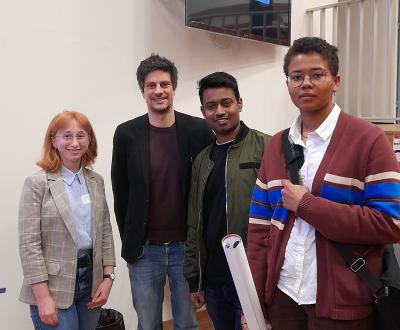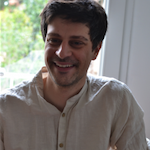CNRS Researcher (HDR)
Bioinspired Confined Catalysis
Caged bioinorganic complexes for efficient and selective catalytic transformations in confined spaces.

Nature’s catalysts, that are enzymes (and in particular metalloproteins), display fascinating reactivities shapped by billion years of evolutionary history. Our research interest are inspired by these systems with (i) artificial models reproducing their active sites, and (ii) receptors inspired by their tridimensional architectures (supramolecular cages). In this line, the group merges bioinspired catalysis and supramolecular chemistry-based approaches, to develop bioinorganic confined catalysts.
- Unusual O2 activation - Confined bioinspired catalysts

JACS-Au 2024 Chem. Commun. 2023
- Efficient transformations in complex mixtures - Chiral & Caged metal complexes

Chem. Commun. 2021 Chem. Commun. 2019
Parcours
2024: Habilitation à diriger les Recherches (HDR) - Aix Marseille Univ.
2020: Chargé de Recherche au CNRS (CRCN, section 14) - iSm2
2018-20: Postdoc, catalysis in confined space - Ecole Centrale Marseille - Prof. A. Martinez
2015-17: Postdoc, host-guest chemistry & cages - Girona Univ., Spain - Profs M. Costas & X. Ribas
2011-14: Thèse, Bioinspired catalysis - Univ. Lyon1, IRCELYON - Drs A. Sorokin & P. Afanasiev

Members
Curent members
- Anna BAIDIUK (PhD student, Oct. 2022 -)
- Mari-beatris ONZIMBA (PhD student, Oct. 2023-)
- Ramkrishna MANDAL (Postdoc, Mar. 2024-)
- Anna Barras (Internship from Ecole Centrale Marseille, 2024)
Past members
- Dr. Donglin Diao (PhD Student, 2019-2022)
- Dr. Gege Qiu (PhD Student 2018-2020, and postdoc 2021)
- Hugo Di Carlo (Master student, Aix-Marseille Univ. 2023)
- Margaux Dos Santos (Master student, Aix-Marseille Univ. 2022)


